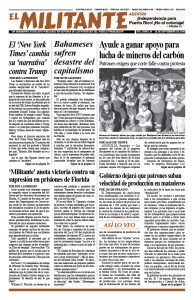When cops in Portland, Oregon, decided they wanted to nail Tyronne Allen for bank robbery, they used Photoshop on his mug shot to wipe out every one of the many tattoos covering his face to make his image “fit” that of the suspect witnesses had described.
The cops carried out their frame-up operation with the photo-editing program in 2017, knowing that surveillance video indicated the perpetrator had no tattoos. Then they put Allen’s “fixed” photo with five “filler photos” in the lineup and showed them to eyewitnesses of the robbery.
Two of the four eyewitnesses identified Allen as the suspect, one did not, and one was unsure. Mark Ahlemeyer, Allen’s attorney, filed a motion this August with the Oregon U.S. District Court to throw out the positive witness identifications based on the doctored picture.
“The revelations raise big questions about how many people may have been falsely identified by eyewitnesses in recent years based on changes [to their photos],” said Mat dos Santos, legal director of the Oregon American Civil Liberties Union.
“If a witness reports that a perpetrator did not have any front teeth, can the government simply black out a suspect’s teeth?” Ahlemeyer said in an interview with the Washington Post.
Detective Brett Hawkinson ordered the manipulation of Allen’s mug shot. He told the court it’s “standard practice among investigators.”
The U.S. Justice Department provided cover for the cops doctoring of photos in a 2017 memo. “If the suspect’s distinctive feature cannot be readily duplicated on the filler photographs, then the suspect’s feature can be blacked out,” it said.
“Some of the nation’s largest police departments regularly use Photoshop and other editing tools in cases where suspects have a distinguishing tattoo, scar, bruise or other mark,” the Aug. 24 New York Times noted.

